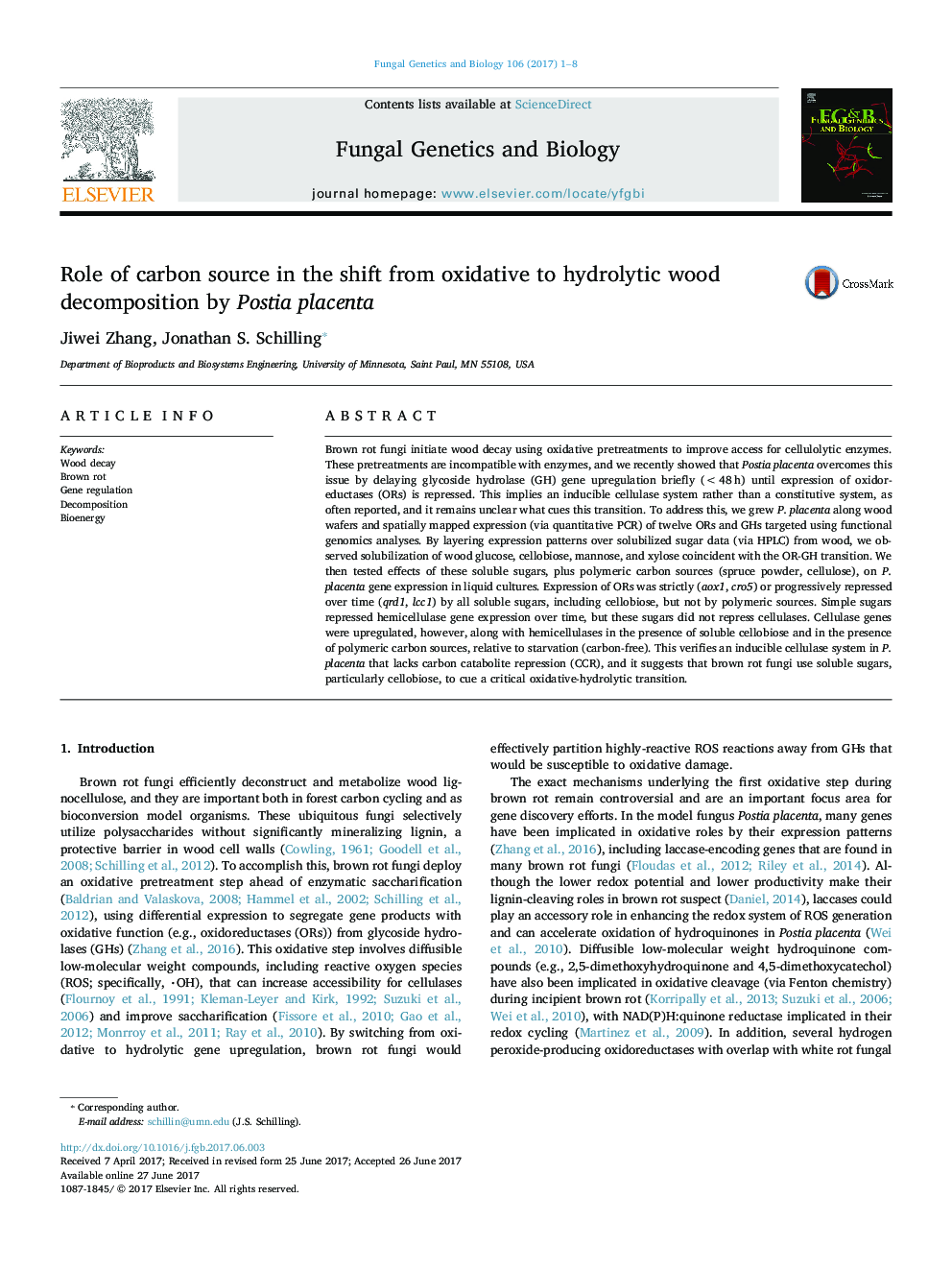| کد مقاله | کد نشریه | سال انتشار | مقاله انگلیسی | نسخه تمام متن |
|---|---|---|---|---|
| 5532726 | 1549985 | 2017 | 8 صفحه PDF | دانلود رایگان |

- Brown rot (BR) fungi use a two-step oxidative-hydrolytic wood decay mechanism.
- BR fungi were assumed constitutive cellulase producers, despite oxidative risks.
- Instead of constitutive production in P. placenta, we found an inducible mechanism.
- Cellobiose cued induction of cellulases, as well as repressing oxidoreductases.
- Brown rot fungi likely segregate two reactions by cuing on the same wood sugar.
Brown rot fungi initiate wood decay using oxidative pretreatments to improve access for cellulolytic enzymes. These pretreatments are incompatible with enzymes, and we recently showed that Postia placenta overcomes this issue by delaying glycoside hydrolase (GH) gene upregulation briefly (<48Â h) until expression of oxidoreductases (ORs) is repressed. This implies an inducible cellulase system rather than a constitutive system, as often reported, and it remains unclear what cues this transition. To address this, we grew P. placenta along wood wafers and spatially mapped expression (via quantitative PCR) of twelve ORs and GHs targeted using functional genomics analyses. By layering expression patterns over solubilized sugar data (via HPLC) from wood, we observed solubilization of wood glucose, cellobiose, mannose, and xylose coincident with the OR-GH transition. We then tested effects of these soluble sugars, plus polymeric carbon sources (spruce powder, cellulose), on P. placenta gene expression in liquid cultures. Expression of ORs was strictly (aox1, cro5) or progressively repressed over time (qrd1, lcc1) by all soluble sugars, including cellobiose, but not by polymeric sources. Simple sugars repressed hemicellulase gene expression over time, but these sugars did not repress cellulases. Cellulase genes were upregulated, however, along with hemicellulases in the presence of soluble cellobiose and in the presence of polymeric carbon sources, relative to starvation (carbon-free). This verifies an inducible cellulase system in P. placenta that lacks carbon catabolite repression (CCR), and it suggests that brown rot fungi use soluble sugars, particularly cellobiose, to cue a critical oxidative-hydrolytic transition.
196
Journal: Fungal Genetics and Biology - Volume 106, September 2017, Pages 1-8